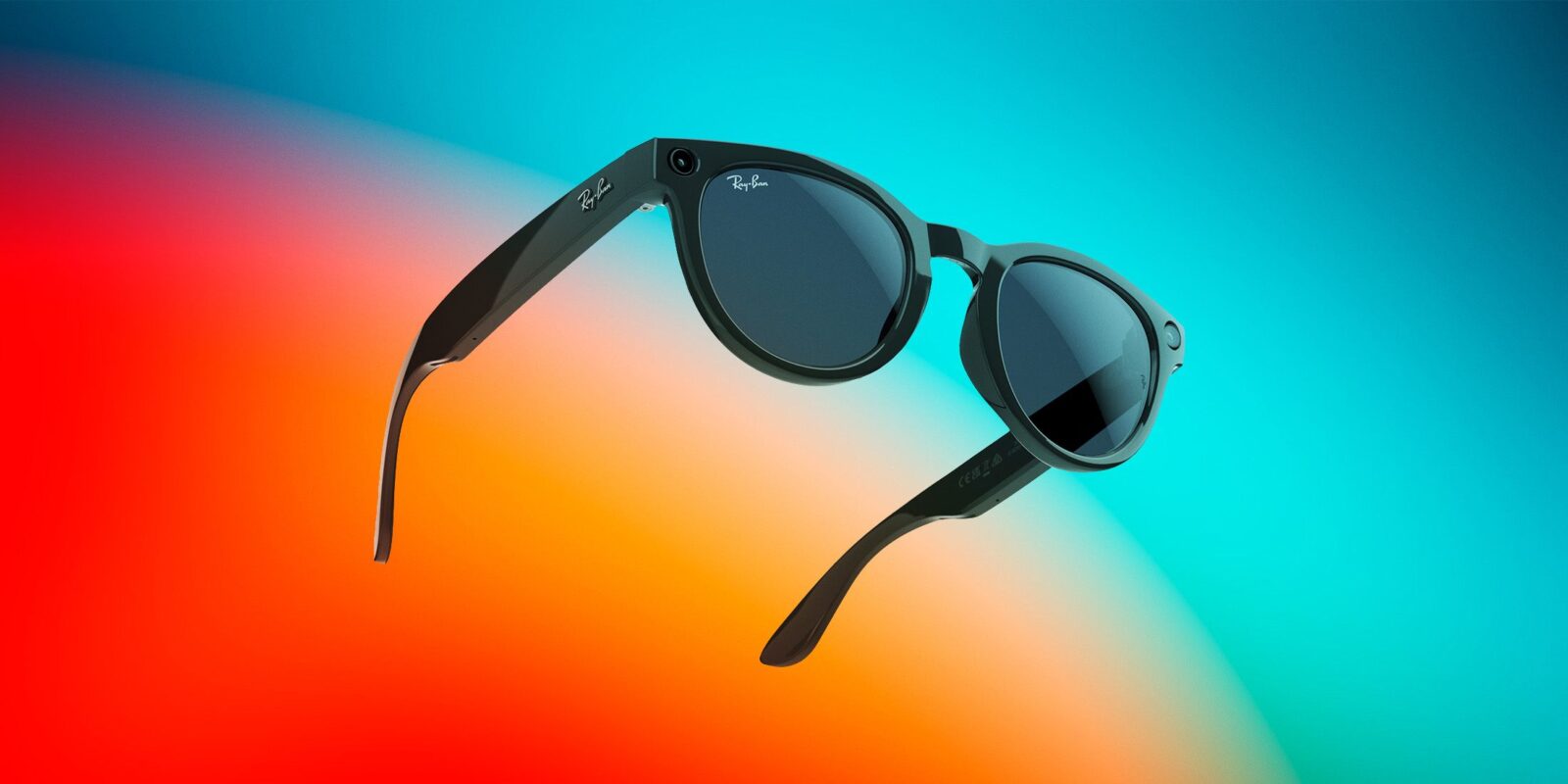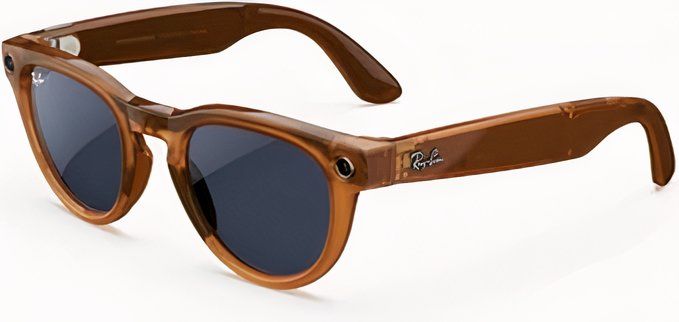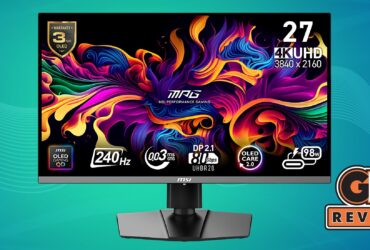The Ray-Ban Meta smart glasses do not take long to impress. There is a quick setup process, charging (if necessary), and then you are off and running. While opinions on AI integration into daily life is going to vary from person-to-person, as well as the utility of these glasses, it’s hard to deny their cool factor. What Meta and Ray-Ban has put together gives you a peek at the future, and as the tech continues to expand, how a pair of glasses can improve daily tasks.
Currently, the Ray-Ban Meta smart glasses are offered in a few different styles and colors. There is the Wayfarer line, which look the most like traditional, wide-frame glasses or sunglasses with squared-off edges. While the Skyler and Headliner, which are more rounded in their design, are a little more stylish. The Headliner also includes a low bridge option for users who might be looking for that.
For Game Rant’s review, we were provided with “Shiny Caramel” version of the Headliner. I’ll admit that these might be a little too stylish for my personality, but they look great. As a glasses-wearer, it’s also worth mentioning that you can put prescription lenses into any of the Ray-Ban Meta smart glasses either at the time of purchase or at an approved retailer after.
Looking at the glasses (and depending on style), you wouldn’t be able to tell they are any different from an average pair of glasses, except for one main difference. The two round cutouts on the left and right of the frames are clear indicators that these are no ordinary glasses, but that don’t stand out too much either. Smart glasses have developed a stigma around their design, but partnering with Ray-Ban ensured that Meta’s glasses blend in nicely for everyday use.
Each pair of Ray-Ban Meta smart glasses comes with a faux leather case that doubles as a charging cradle. Under the bridge of the glasses are two connectors that “lock” into a charging port on the glasses case, which then supply power via a USB-C connection. The magnetic clasp that holds the case closed also features a colored light to indicate charge level.
It’s a thoughtful design, one that doesn’t feel cumbersome or call attention to its design. There are no wires hanging off the temples or oversized segments saying “hey these are not just glasses.” Even the tech that is built into the glasses, like the speakers that rest above your ears on the right and left temples, is seamlessly integrated into the design. Some may want that more tech-y look, but I appreciated that the design didn’t make form an afterthought.
Features of the Ray-Ban Smart Glasses
Of course, function is the major selling point for the Ray-Ban Meta smart glasses and this is where things get really exciting. It’s worth prefacing any praise for the glasses by saying this is all AI-based, and therefore some might write them off immediately. That is a completely valid perspective to have and there are certainly concerns regarding privacy and the sharing of info, but just looking at the functionality, the Ray-Ban Meta smart glasses have some really sharp tech under the hood.
After pairing the glasses with a mobile device like an iPhone, all you need to do is put on the Ray-Ban Meta smart glasses and you’re off and running. There is both a button on the top right where the hinge meets the temple and a touch segment on the outer surface of the temple. You can program what these activate, be it taking a photo, activating video, or raising/lowering volume. The 12MP camera is solid, delivering decent-quality photos and videos. While it can’t compete with smartphone cameras, the camera quality is strong enough that you would be happy to share your images. But more than that, snapping a photo of what you are looking at, quickly and in the moment, is a major selling point for the glasses. They feature an intuitive control interface, but it pales in comparison to the voice activation features. That is where the Ray-Ban Meta smart glasses shine.
By saying “Hey Meta,” you can activate the listening mode of the glasses’ AI. From there, you can give it simple commands like “take a photo” or “send a text message.” If you give the glasses permission, it can do a lot of the hands-free features that you expect, like answer questions about the weather or search the Internet for basic queries. Being able to activate those features with just your voice is novel, but it works very well. There are no doubt going to be situations where you won’t want to “talk” to your glasses, and for those the button and touchpad are useful, but being able to get information and perform tasks with just your voice is fun.
While you can do most of the same tasks on the Ray-Ban Meta smart glasses as your digital assistant on a phone, things get interesting when you incorporate the camera. When asking the Meta AI certain questions, it will take a photo, analyze that photo, and provide a response based on what it sees. So, for example, if you want to know what plant you are looking at or who created a piece of art, you can ask the Ray-Ban Meta smart glasses. It’s here that the real wow factor of the glasses manifests.
The Ray-Ban Meta smart glasses include a privacy light that activates anytime you take a photo or record video. This alerts anyone nearby that they are on camera.
I spent hours inquiring about my surroundings and was consistently surprised by the depth of Meta AI’s knowledge. It recognized pop culture toys like the Mondo Cyclops figure on my shelf and correctly surmised the breed of my cat. You can be looking at a math problem and ask Meta to solve it, or you can look at a set of ingredients and ask for a recipe. For my daily use, I found Meta AI most useful when summarizing text on my screen, giving me an overview of a document, for example.
Using an AI assistant is nothing new for tech, but pairing it with the Ray-Ban Meta smart glasses does feel like an extremely useful application. Granted, I spent more time testing the depth of knowledge available to me rather than real-world scenarios, but it usually gave me what I was looking for. There were times when the Meta AI couldn’t successfully analyze my surroundings or correctly answer my question, like thinking Lion-O from the Thundercats was He-Man, but those were few and far between. It isn’t without fault, but if you are looking for basic answers, the AI will do the trick with no problem.
It’s currently in limited testing, but the Ray-Ban Meta smart glasses also have a feature called Live AI, where the camera records your surroundings and answers questions as they come rather than with a prompt. Easily the most impressive application for this was asking Meta AI to translate one of my Spanish-speaking friend’s conversation. Not only did the Meta AI translate and pipe that audio through the speaker, but I could ask it to give me responses. Crossing that language barrier with your glasses is not a sentence you might expect to write, but it left me amazed. Another popular application for Live AI is to have it follow along with a recipe, telling you how much of each ingredient to add, what step to take next, and more.
At a glance, the Ray-Ban Meta smart glasses might just seem like glasses that can take pictures and record video. While they can do that, the integration with Meta AI gives them a broad use-case, to the point you can’t single out just one thing that the glasses do. There’s an obvious novelty to using the glasses, and the utility will vary from person to person, but it’s hard not to be impressed when incorporating them into daily life. Concerns about AI aside, these Ray-Ban Meta smart glasses truly feel like a glimpse at the future of tech.
The Ray-Ban Meta Smart Glasses are available now. Game Rant was provided the Headliner style in Shiny Caramel for this review.














Leave a Reply